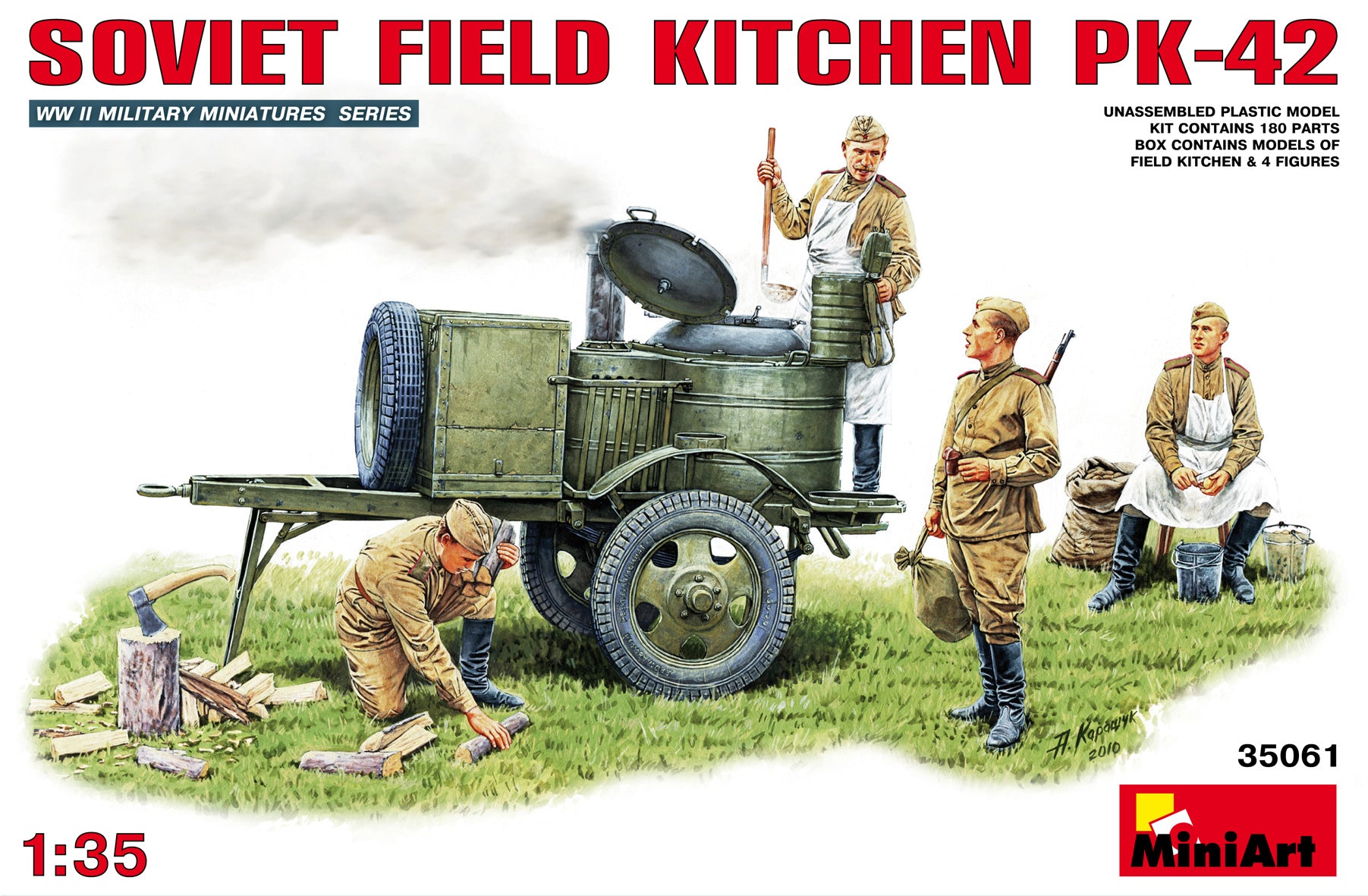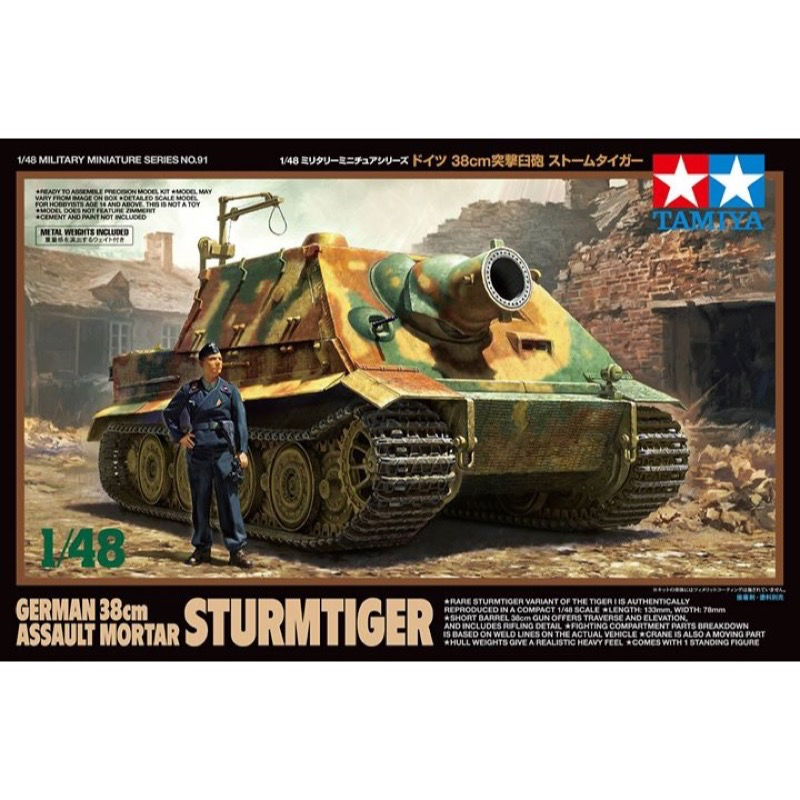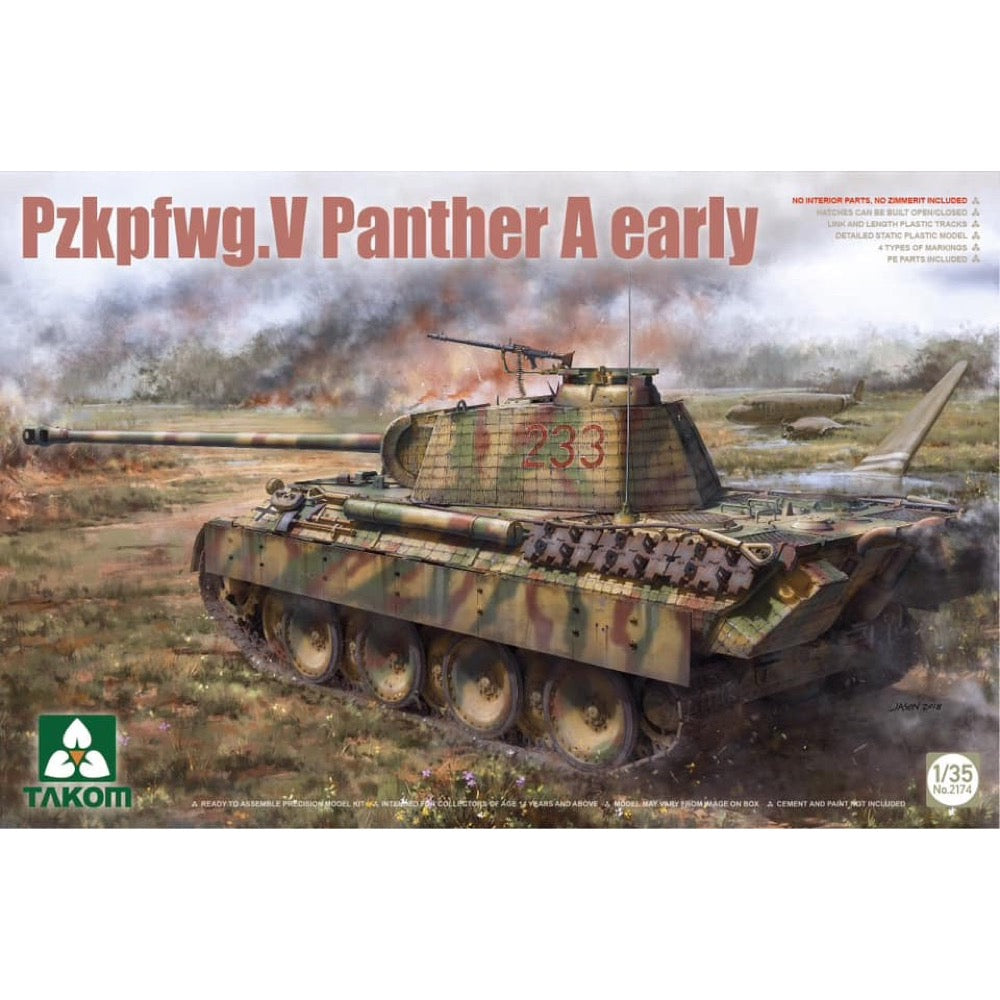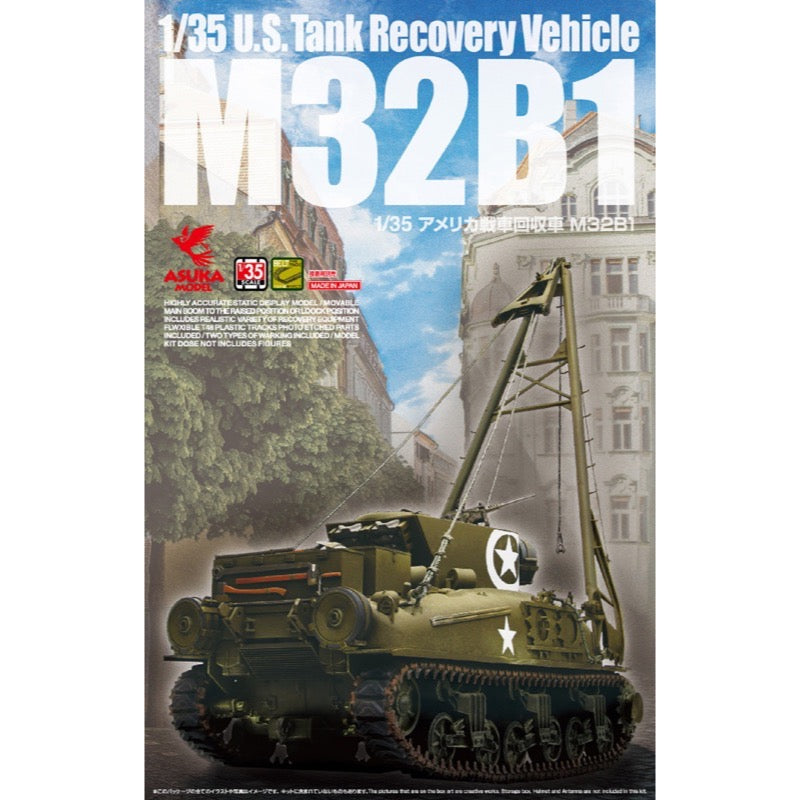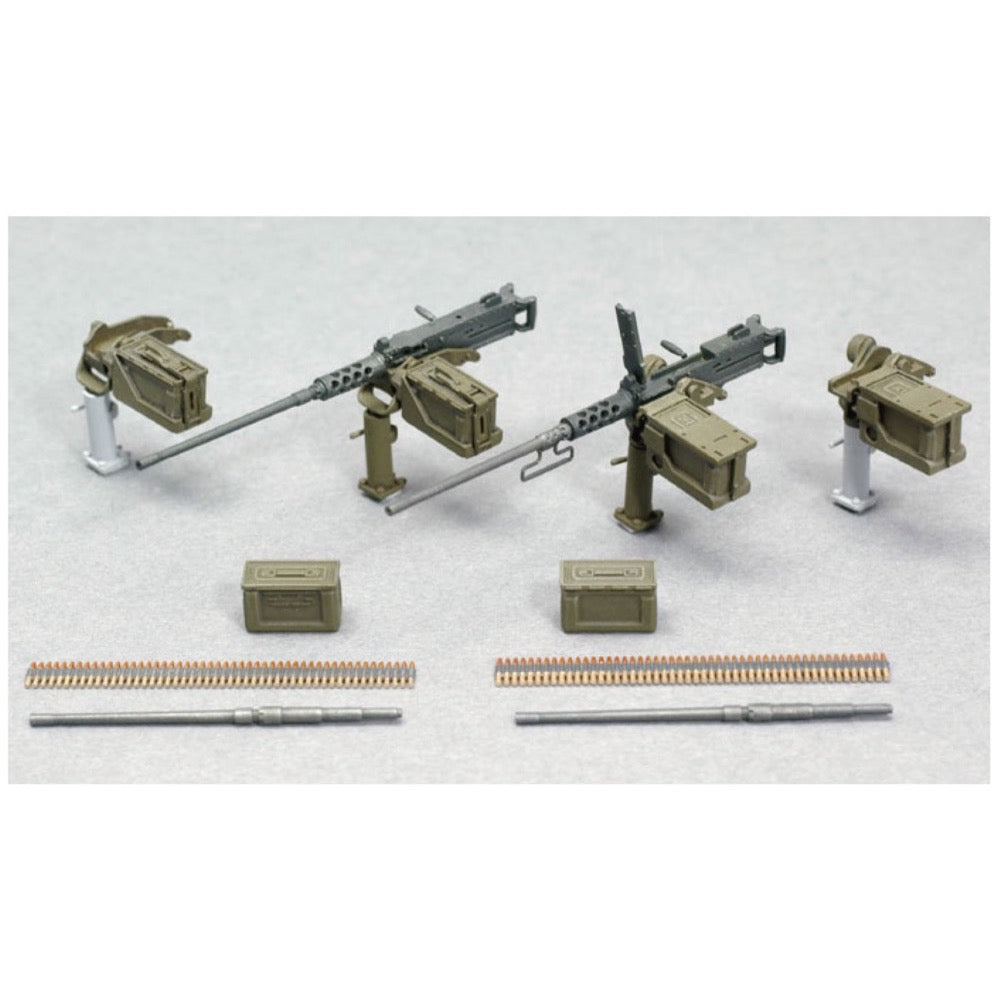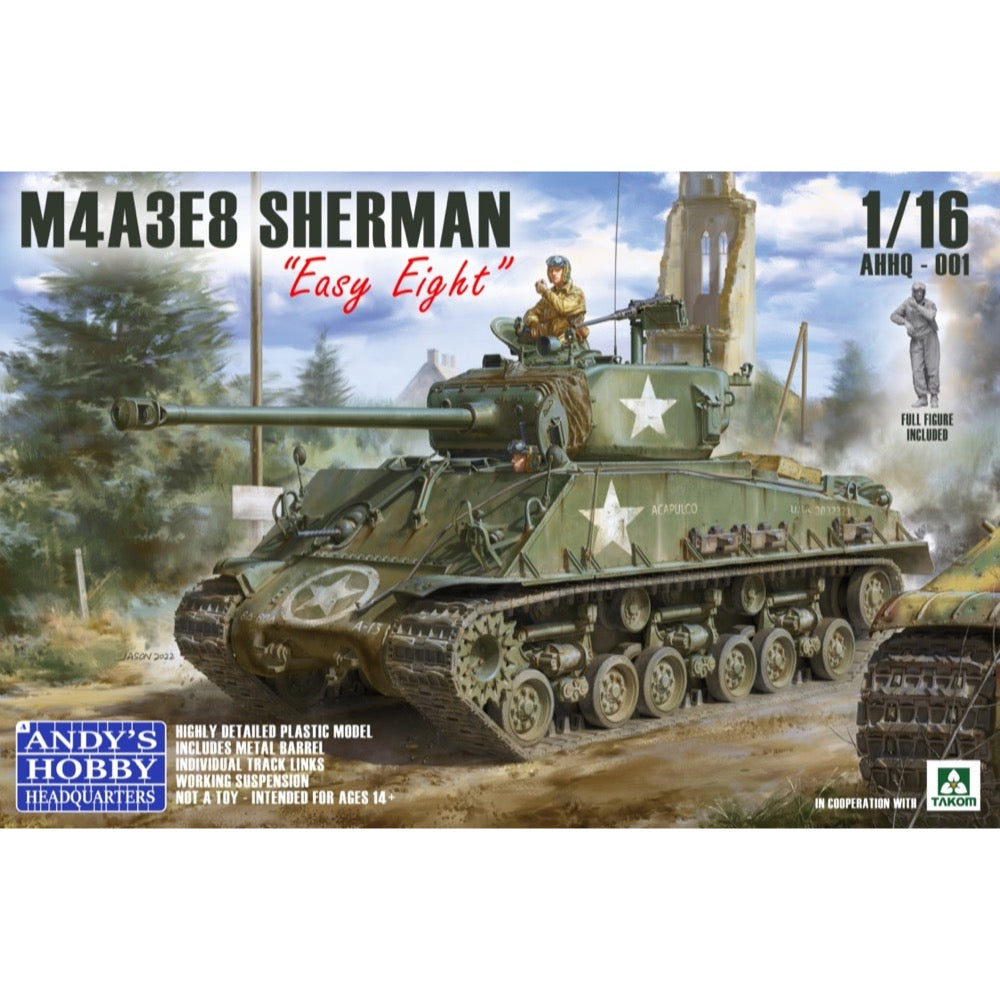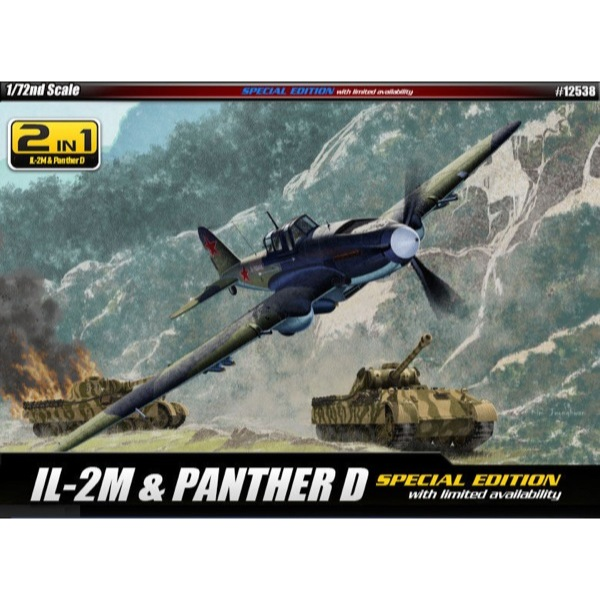
Academy 12538 1/72 IL-2M & Panther D
25.00
$
<p>The Ilyushin Il-2 is a Soviet, single-engine low-wing and mixed structure attack aircraft with a classic tail, designed by Sergei Ilyushin from the Second World War. The flight of the prototype took place on October 2, 1939, and serial production started in 1940 and lasted until 1945. In total, as many as 36,183 copies of this great plane were created. The power unit was a 12-cylinder Mikulin AM-38 piston engine with a power of up to 1600 HP. The concept of the Il-2 aircraft was based on the desire to create a heavily armed and heavily armored attack aircraft designed to destroy the enemy's land targets and his armored vehicles. The airplanes produced in series had armor from 4 to 6mm around the engine and cockpit. The Il-2 was therefore resistant to small arms fire as well as to single hits with 20mm cannons. After improving the quality of crew training and applying new tactics, the Il-2 became an aircraft capable of wreaking havoc among the German Panzewaffe. It is no coincidence that the Germans gave him the nickname "flying death", and the designer nicknamed him "flying tank". During the war, a dozen or so versions of Ił-2 were created, the most important of which is Ił2m3. Its crew consisted of two people - a pilot and a rear gunner, the Mikulin AM-38F (1700 KM) unit was used as the engine and a self-sealing fuel tank was introduced. The aerodynamic properties were also improved. In total, 7377 machines of this version were built by 1944. Il-2 took part in all major battles on the Eastern Front - from Moscow (1941) through Stalingrad and Kursk (1942/1943), until the Berlin Operation in 1945. Technical data (version Ił-2 mod.1942): length: 11.65m, wingspan: 14.6m, maximum speed: 426km / h, practical range: 740km, practical ceiling 6200m, armament: permanent - 2 WJ cannons cal. 23mm, 2 x 7.62mm SzKAS machine guns, underslung-8 RS-82 / RS-132 unguided missiles, up to 400 kg of bombs.The Pz.Kpfw V (SD.Kfz 171) Panther is a German medium tank, considered to be one of the best tanks of the Second World War. This vehicle was a response to the Soviet T-34. The first production versions appeared as early as 1942, but the Panthers appeared for the first time on the front lines in the summer of 1943, in the Battle of Kursk. Due to the very high failure rate and numerous "childhood" problems of the vehicle, 150 out of 204 used vehicles were lost. Interestingly, however, only a few of these 150 cars were lost as a result of the Soviet shelling. After eliminating these shortcomings, the Panther became famous as an extremely effective tank. It owed it to the well-shaped frontal armor and the excellent anti-tank gun. KwK 42 / L70 cal 75mm. The basic version of the T34 / 76 did not stand a chance with the Panther. Only the advent of the T34 / 85 and IS-2 tanks changed this state of affairs. On the other hand, the Allied Sherman tanks could compete with the Panther only after being armed with a 17-pound gun (Sherman Firefly). Nevertheless, it should not be forgotten that the Achilles' heel of this successful design was the weak side armor and the high technical complexity of the entire structure, and thus the high production time. Throughout the war, around 6,000 Panther vehicles of all versions (Ausf. D, A, G) were produced. The first mass-produced version was the "D" version, with 80mm thick frontal armor and a Maybach 230 P30 engine with 700HP. From the second half of 1943, tanks of this version had armored aprons. The Panther Ausf entered production in September 1943. A. It had a spherical mount for the MG-34 rifle in the fuselage. It was produced until March 1944. The "G" version was the most produced version. Over 3,700 tanks of this model were built. It was produced from March 1944 to January 1945. It mainly increased the angle of the frontal armor and made it thicker. The gun mantlet has also been modified. The Jagdpanther tank destroyer (Sd.Kfz 179) was also built on the Panther's chassis. When assessing the Pz.Kpfw V, you should remember not only about the great frontal armor or the gun, but also pay attention to the disadvantages of the weapon - large overall dimensions, delicate suspension, armor of increasingly poor quality caused by a lack of molybdenum or weak side armor. Technical data: length (with a barrel): 8.66m, width: 3.42m, height: 2.99m, engine power: 700KM, range (on the road): 200km, maximum speed (on the road): 46km / h, weapons : 1 cannon. 75mm KwK 42 / L70, 2 7.92mm MG-34 machine guns.</p>
<p>This is an injection-plastic military vehicle model kit.</p>
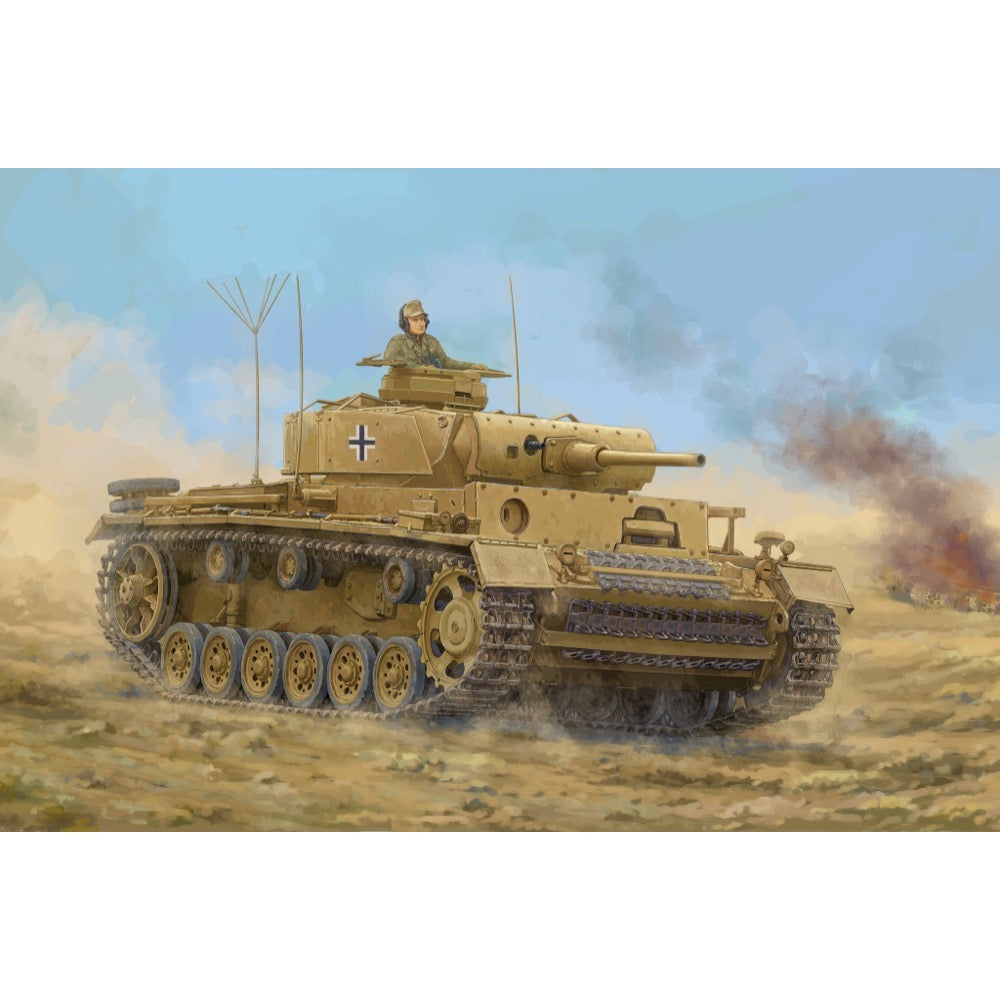
Trumpeter 00955 1/16 Pz.Kpfw.III Ausf.J
87.00
$
<p>Panzer III was the common name of a medium tank that was developed in the 1930s by Germany and was used extensively in World War II. The official German designation was Panzerkampfwagen III Sd Kfz. 141 (abbreviated PzKpfw III) translating as "armoured fighting vehicle". It was intended to fight other armoured fighting vehicles and serve alongside the support Panzer IV; however, as the Germans faced the formidable T-34, stronger anti-tank guns were needed. Since the Panzer IV had a bigger turret ring, the roles were reversed. The Panzer IV mounted the long barrelled 7.5 cm KwK 40 gun and engaged in tank-to-tank battles. The Panzer III became obsolete in this role and for most purposes was supplanted by the Panzer IV. From 1942, the last version of Panzer III mounted the 7.5 cm KwK 37 L/24, better suited for infantry support. Production of the Panzer III ended in 1943. However, the Panzer III's capable chassis provided hulls for the Sturmgeschütz III assault gun until the end of the war.</p>
<h3>Features</h3>
<ul>
<li>The kit consists of over 1700 parts<br>
</li>
<li>The kit w/refined detail<br>
</li>
<li>Multi-slide moulded lower hull and upper hull<br>
</li>
<li>Individual tracks links<br>
</li>
<li>Photo-eteched parts included</li>
</ul>
<h3>Specifications</h3>
<ul>
<li>Model Brief: Length: 352.5mm Width: 204.6mm <br>
</li>
<li>Total Parts: 1700+<br>
</li>
<li>Metal Parts: gun barrel <br>
</li>
<li>Total Sprues: 56 sprues , lower hull and tracks</li>
</ul>
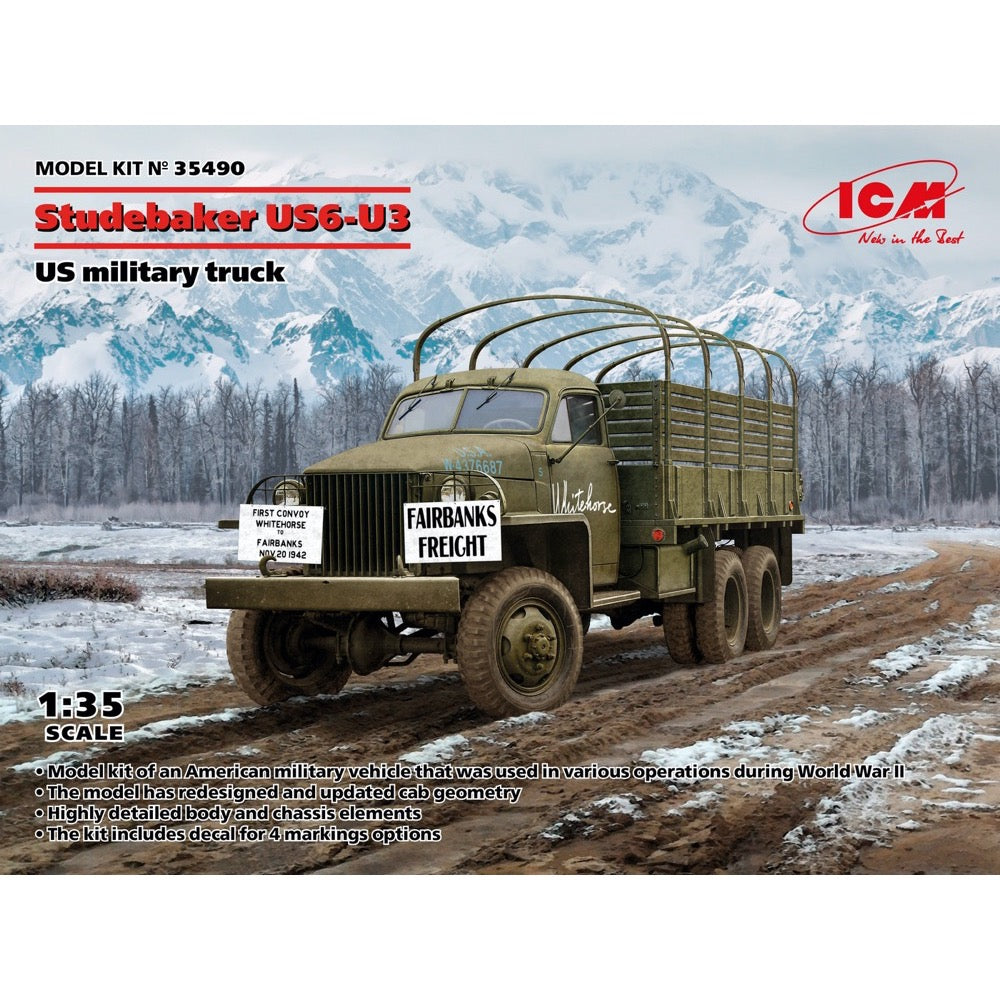
ICM 35490 1/35 Studebaker US6-U3 US Military Truck
44.00
$
<h3>Studebaker US6-U3</h3>
<p><strong>US military truck</strong></p>
<p>The Studebaker US6 three-axle truck was launched by the Studebaker Corporation in 1941, and in 1943, REO Motor Car also joined the production. In total, about 200,000 vehicles of thirteen modifications were produced. The car had a robust design and a large payload. Its 94 hp Hercules JXD 6-cylinder engine provided the Studebaker US6 with high off-road performance. Most of these trucks were used by US allies, but a certain number were also used by the US armed forces. For example, Studebaker US6s were used by the US Army Corps of Engineers, in particular, during the construction of the Alaska Highway. A small number of these trucks were used by the US Army in Europe, as part of the so-called reverse lend-lease, when a certain amount of equipment transferred to the allies was returned to the US for various reasons. There are also cases of Studebaker US6 being used by the US armed forces in the Far East.</p>
<!---->
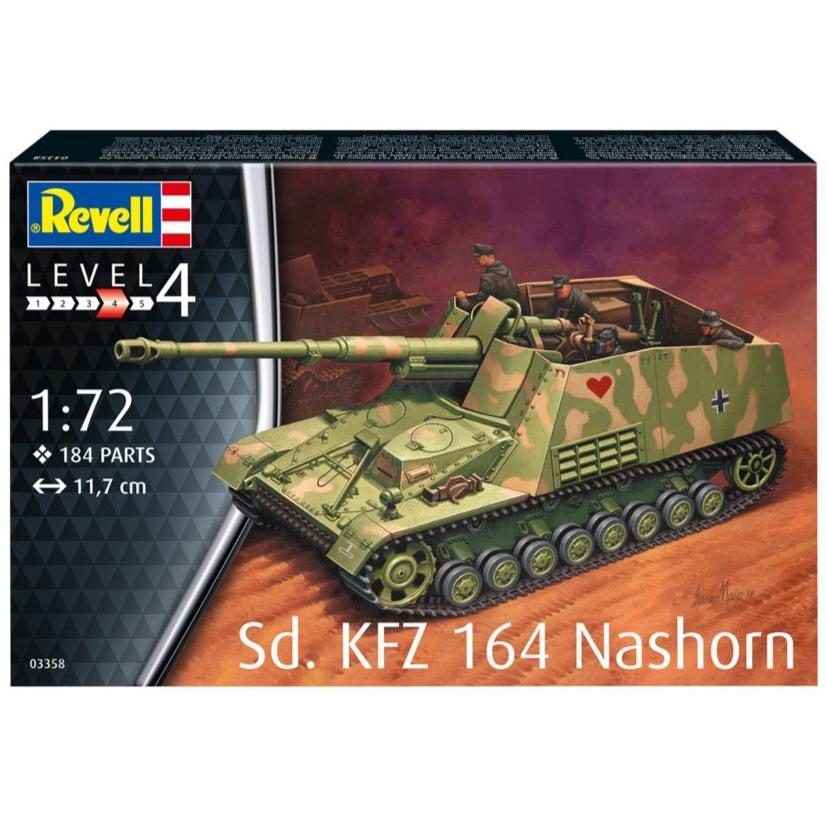
Revell 03358 1/72 Sd.Kfz.164 Nashorn
11.00
$
<h3>German tank destroyer used during World War II.</h3>
<p>Armament: It was armed with a powerful 8.8 cm PaK 43/1 anti-tank gun, capable of penetrating heavily armored vehicles at long ranges.</p>
<p>Deployment: The Nashorn was deployed on the Eastern and Western fronts, providing mobile anti-tank support to German forces.</p>
<p>It had limited armor protection but offered excellent firepower.</p>
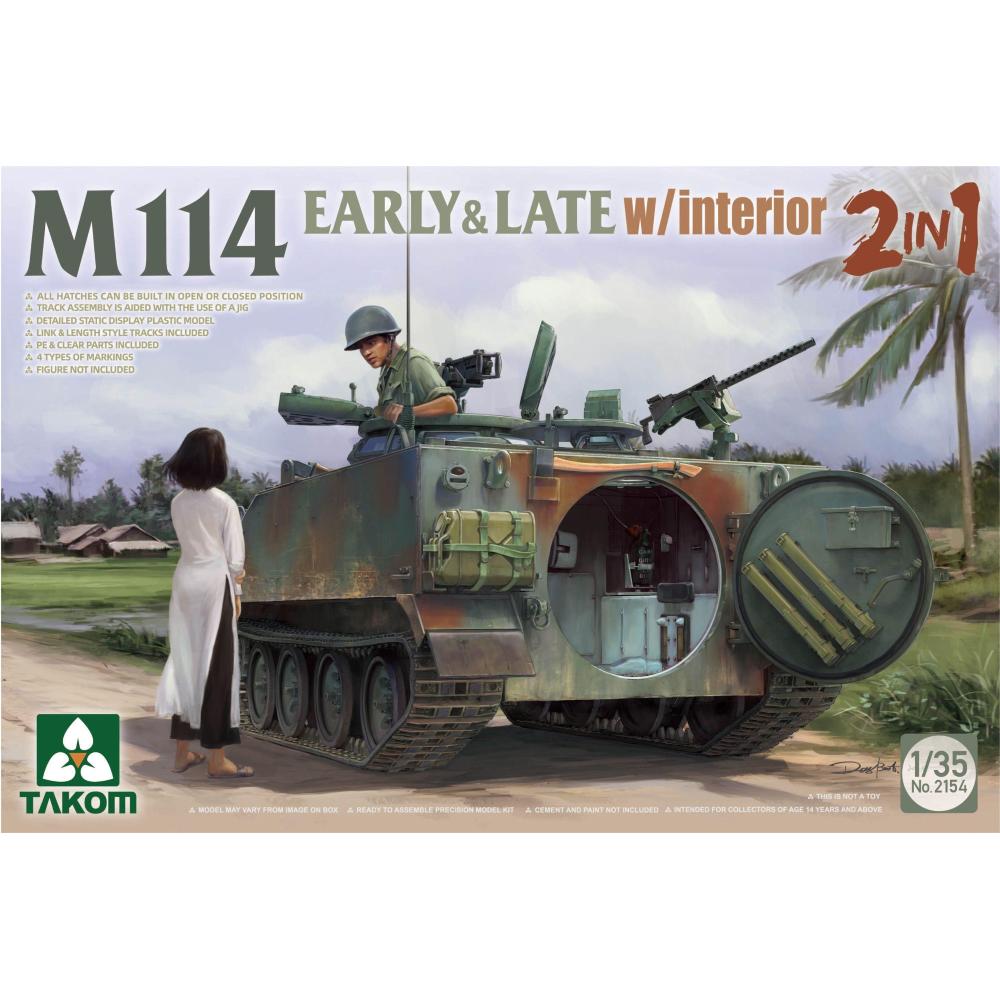
Takom 2154 1/35 M114 Early and Late with Interior 2 in 1
25.00
$
<p>The M114 armored reconnaissance vehicle was designed to assist the M113's command and reconnaissance missions, and was used by the United States Army during the Vietnam War. This vehicle had the ability to float, and could also be dropped by parachute! The M114 was reared in 1975 and disappeared from all units by 1980, but a small number of this vehicle continue to be used by police departments.</p>
<h3>Features</h3>
<ul>
<li>
<p>Main hatch that can be built opened or closed</p>
</li>
<li>
<p>The tracks are link-and-length type</p>
</li>
<li>
<p>Clear parts and photo-etched parts are included</p>
</li>
</ul>
<h3>Includes</h3>
<ul>
<li>
<p>Photo-etched parts</p>
</li>
<li>
<p>Decals for 4 versions</p>
</li>
</ul>


